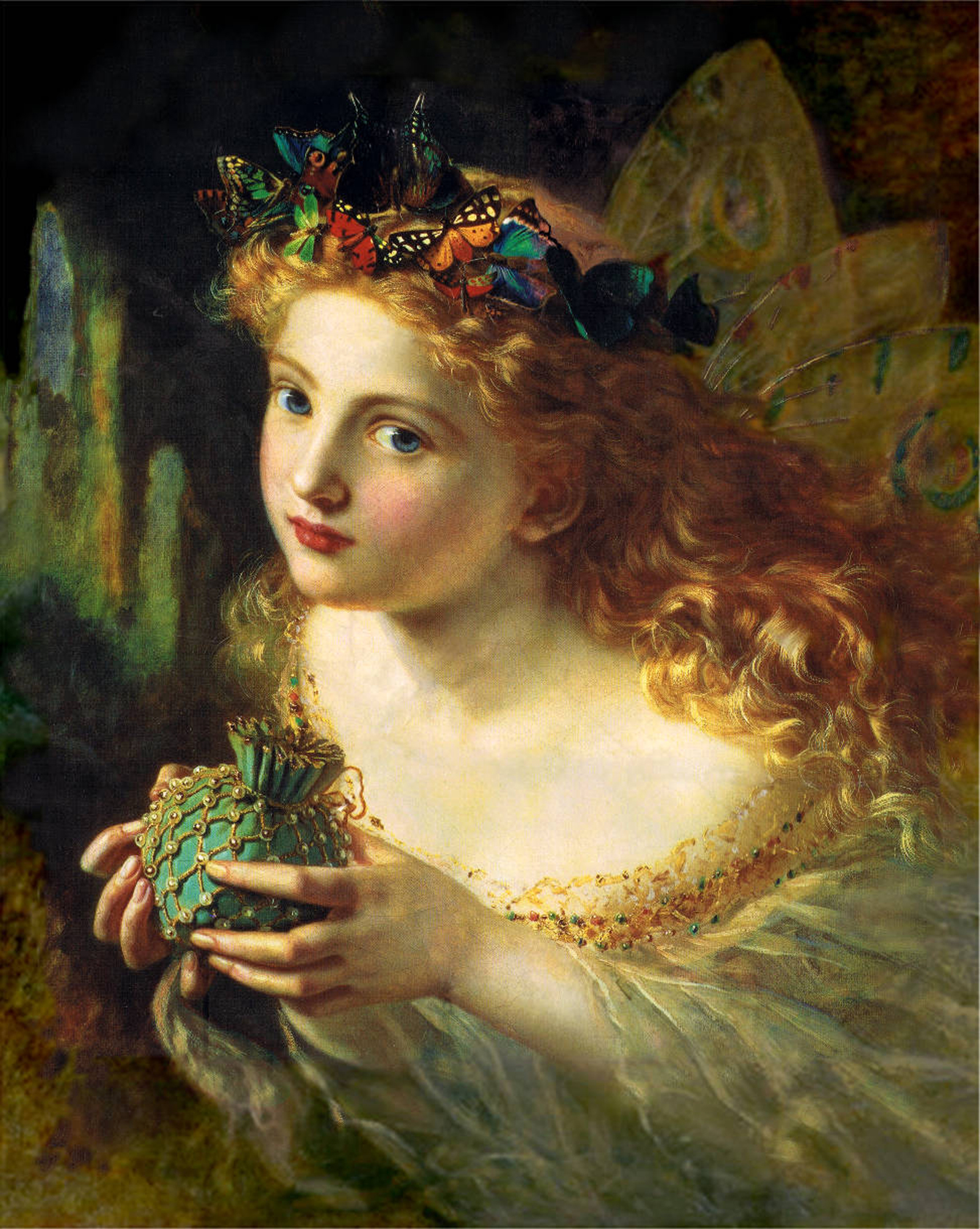
Fairy
A fairy (also fay, fae, fey, fair folk, or faerie) is a type of mythical being or legendary creature, generally described as anthropomorphic, found in the folklore of multiple European cultures (including Celtic, Slavic, Germanic, and French folklore), a form of spirit, often with metaphysical, supernatural, or preternatural qualities.
For other uses, see Fairy (disambiguation).Grouping
Myths and stories about fairies do not have a single origin, but are rather a collection of folk beliefs from disparate sources. Various folk theories about the origins of fairies include casting them as either demoted angels or demons in a Christian tradition, as deities in Pagan belief systems, as spirits of the dead, as prehistoric precursors to humans, or as spirits of nature.
The label of fairy has at times applied only to specific magical creatures with human appearance, magical powers, and a penchant for trickery. At other times it has been used to describe any magical creature, such as goblins and gnomes. Fairy has at times been used as an adjective, with a meaning equivalent to "enchanted" or "magical". It is also used as a name for the place these beings come from, the land of Fairy.
A recurring motif of legends about fairies is the need to ward off fairies using protective charms. Common examples of such charms include church bells, wearing clothing inside out, four-leaf clover, and food. Fairies were also sometimes thought to haunt specific locations, and to lead travelers astray using will-o'-the-wisps. Before the advent of modern medicine, fairies were often blamed for sickness, particularly tuberculosis and birth deformities.
In addition to their folkloric origins, fairies were a common feature of Renaissance literature and Romantic art, and were especially popular in the United Kingdom during the Victorian and Edwardian eras. The Celtic Revival also saw fairies established as a canonical part of Celtic cultural heritage.
Etymology
The English fairy derives from the Early Modern English faerie, meaning 'realm of the fays'. Faerie, in turn, derives from the Old French form faierie, a derivation from faie (from Vulgar Latin fata, 'the fates'), with the abstract noun suffix -erie.
In Old French romance, a faie or fee was a woman skilled in magic, and who knew the power and virtue of words, of stones, and of herbs.[3]
Fairy was used to represent: an illusion or enchantment; the land of the Faes; collectively the inhabitants thereof; an individual such as a fairy knight.[3] Faie became Modern English fay, while faierie became fairy, but this spelling almost exclusively refers to one individual (the same meaning as fay). In the sense of 'land where fairies dwell', archaic spellings faery and faerie are still in use.
Latinate fae, from which fairy derives, is distinct from English fey (from Old English fǣġe), which means 'fated to die'.[4] However, this unrelated Germanic word fey may have been influenced by Old French fae (fay or fairy) as the meaning had shifted slightly to 'fated' from the earlier 'doomed' or 'accursed'.[5]
Various folklore traditions refer to fairies euphemistically as wee folk, good folk, people of peace, fair folk (Welsh: Tylwyth Teg), etc.[6]
Historical development
The term fairy is sometimes used to describe any magical creature, including goblins and gnomes, while at other times, the term describes only a specific type of ethereal creature or sprite.[7]
Explanations for the origins of fairies range from Persian mythology[8] to the folklore of the Brythonic (Bretons, Welsh, Cornish), Gaelic (Irish, Scots, Manx), and Germanic peoples, and from the pages of Middle French medieval romances.
According to some historians, such as Barthélemy d'Herbelot, fairies were adopted from and influenced by the peris of Persian mythology.[9] Peris were angelic beings that were mentioned in antiquity in pre-Islamic Persia as early as the Achaemenid Empire. Peris were later described in various Persian works in great detail such as the Shahnameh by Ferdowsi. A peri was illustrated to be fair, beautiful, and extravagant nature spirits that were supported by wings. This may have influenced migratory Germanic and Eurasian settlers into Europe, or been transmitted during early exchanges.[10] The similarities could also be attributed to a shared Proto-Indo-European mythology.[8]
In the Middle Ages, fairie was used adjectivally, meaning "enchanted" (as in fairie knight, fairie queene), but also became a generic term for various "enchanted" creatures during the Late Middle English period. Literature of the Elizabethan era conflated elves with the fairies of Romance culture, rendering these terms somewhat interchangeable. The modern concept of "fairy" in the narrower sense is unique to English folklore, later made diminutive in accordance with prevailing tastes of the Victorian era, as in "fairy tales" for children.
The Victorian era and Edwardian era saw a heightened increase of interest in fairies. The Celtic Revival cast fairies as part of Ireland's cultural heritage. Carole Silver and others suggested this fascination of English antiquarians arose from a reaction to greater industrialization and loss of older folk ways.[11]
Characteristics
Much folklore of fairies involves methods of protecting oneself from their malice, by means such as cold iron, charms (see amulet, talisman) of rowan trees or various herbs, or simply shunning locations "known" to be theirs, ergo avoiding offending any fairies.[48] Less harmful pranks ascribed to fairies include: tangling the hair of sleepers into fairy-locks (aka elf-locks), stealing small items, and leading a traveler astray. More dangerous behaviors were also attributed to fairies; any form of sudden death might have stemmed from a fairy kidnapping, the evident corpse a magical replica of wood.[49] Consumption (tuberculosis) was sometimes blamed on fairies who forced young men and women to dance at revels every night, causing them to waste away from lack of rest.[50] Rowan trees were considered sacred to fairies,[51] and a charm tree to protect one's home.[52]